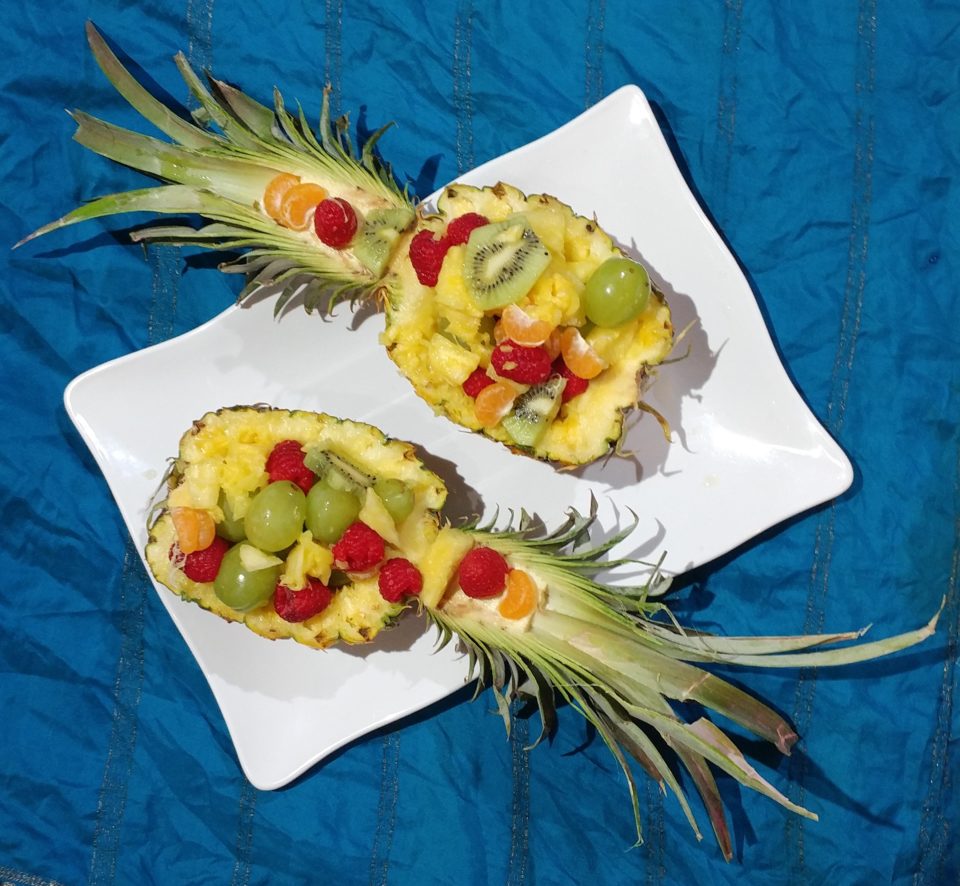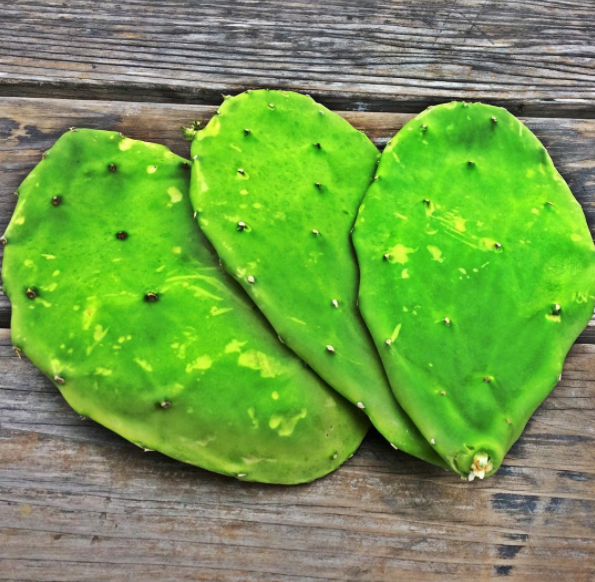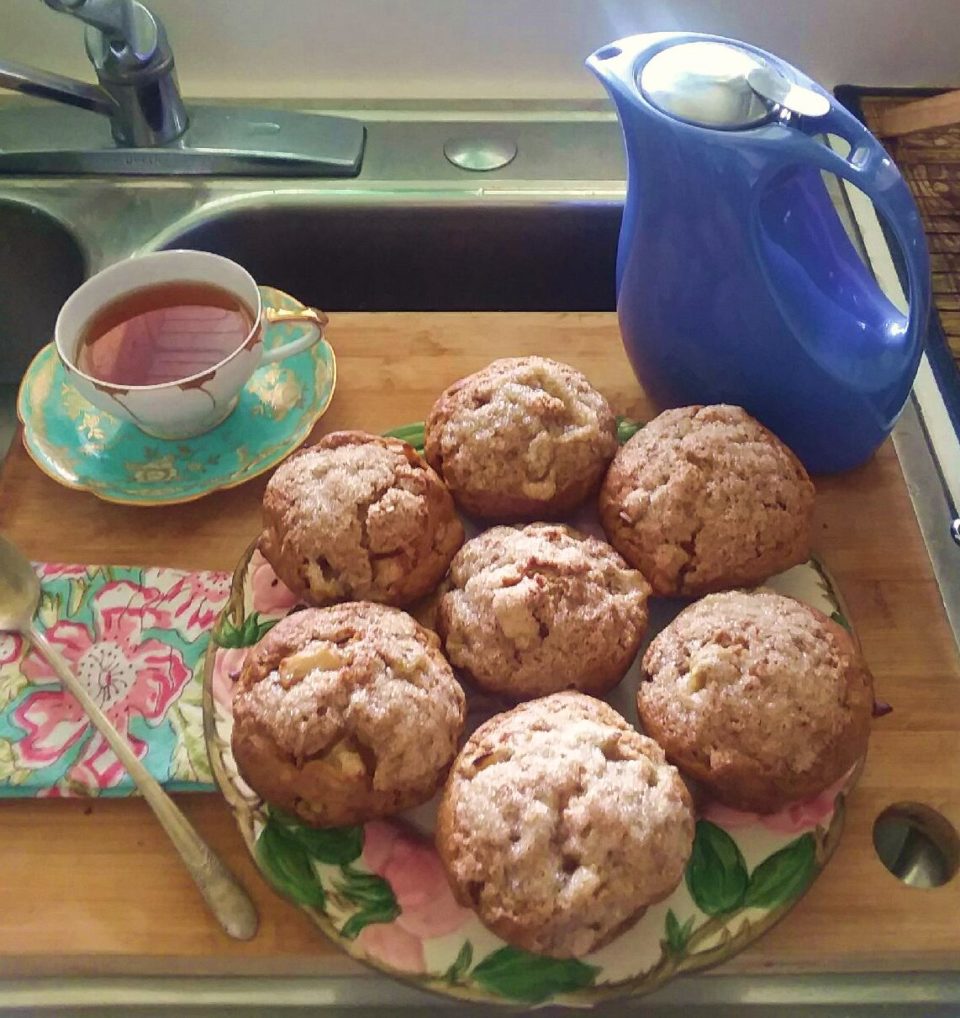A New Year’s Resolution: Cook Healthy to Stay Healthy!
December 18, 2017
The tradition of making New Year’s resolutions started some 4000 years ago in Babylonia, and even today, in many cultures, the first day of the new year is considered an auspicious time for a new start. What is more important for a happy new year than improving your health? This year, let us resolve to cook more, and to share food and cooking more often with our loved ones.
Why does cooking at home and sharing food lead to better health? Because most packaged foods contain too much salt, fat and sugar, and home-made food can have select ingredients. And, a special time set aside with your loved ones to prepare food can add to quality of life.
Our Ayurvedic (science of long life) ancestors noted that a satvic (well-balanced) diet leads to good health, whereas tamasi (not nourishing) foods with too much fat and additives cause sickness. Even the best packaged foods often contain ingredients that are not nutritious. Any boxed lunch sitting on a shelf for a few days is certainly less nutritious than freshly prepared food. And why cook together? Social interaction is a necessary ingredient for good health and long life. Sharing our well-intended resolutions makes us all more likely to succeed. As I like to say: “people who cook together, stay together!”
In the past, food was grown locally, without chemicals and fertilizers. Food was also prepared with minimal salt, oil, spices, and sweeteners because they were scarce and precious. Modern technology has freed us from hard work, but has also threatened our health by reducing the nutrients in our food. What is more, our busy lifestyles require many of us to work away from home and the kitchen for most of the day. Our children spend their days in school or child care, so it’s not always easy to have home-made meals!! Instead, we often grab prepared fast foods to get through the day, and choose from the deli to feed our family dinner!
Vegetarians follow a plant-based diet, which would suggest that they select healthy food, but this is not always true. I have met many vegetarians who don’t eat vegetables!! They live on starchy, sugary, fried food; some out of economic necessity, others out of lack of knowledge regarding food and nutrition. As Raj Patel says: they “are overfed and malnourished”.
Diets rich in fat, dairy and sugar have been directly linked to elevated rates of heart disease, diabetes, obesity and tooth decay. A modern diet (even a vege-based diet) is often laden with saturated fats and sugars and foods containing these products are aggressively pushed by false claims of ‘natural food’ and alluring advertisements.
In my opinion, the two areas of our diet that need modification are: appetizers and desserts. Deep fried appetizers and munchies are laden with calories and devoid of nutrients. Cooking vegetables with hot oil destroys most of the nutritional value of the vegetables and the oil.
Sweet treats are a sign of good hospitality and good luck and should be spared for special occasions. Because most desserts — even the “healthy” desserts are laden with unhealthy ingredients and some of them are deep-fried as well. With some education about food and thoughtful weekly planning, working people can come up with recipes to improve their diet and health.*
Sweets play an import role in celebration, but your daily menu balanced with a variety of food and presented attractively need not be followed by a dessert containing sugar and fat. Instead, serve fresh fruit or a fruit salad and reserve more detailed desserts (made with reduced sugar) for special occasions.
Refined and bleached cane sugar is the most commonly used sweetener for desserts, and is very harmful to our health. Refined sugar raises blood sugar levels, increases heart beats, impairs the immune system, and raises hyper-activity among kids. Honey and maple syrup, also high in calories, contain only micro-nutrients, and agave, once touted as a good alternative natural sweetener is now also considered unhealthy. Stevia, a natural sugar substitute has an unpleasant after-taste. Date sugar and coconut sugar have the lowest glycemic index, but they are high in calories as well. So instead of looking for a perfect sweetener, which does not exist, I suggest using less sugar whenever possible, and using all sugars in moderation.
To minimize unhealthy dairy and fats in dessert, try cutting down the amount of butter or ghee, or use a vegan spread instead, and use it sparingly. In desserts such as the rice pudding, described below can use coconut milk, or almond milk, both a vegan option. Nut meals are also valuable ingredients for preparing gluten-free desserts.
Fruit Salad Boat or Mixed Fruit Salad
California is blessed with fresh fruit year-round. Fresh fruit is always packed with nutrients and anti-oxidants that prevent us from getting sick. A Fruit Salad Boat is an attractive centerpiece for any party or a picnic. Fruit Boats can be made using papaya, cantaloupe, or watermelon, whatever is in season. This one, for fall and winter, includes seasonal berries and chunks of fuyu persimmon, fuji apples, grapes and pineapple.
1 large ripe pineapple, to make two fruit boats
2 fuyu persimmons (the ones that can be consumed while they are hard),
peeled and cut into chunks
or 1 fuji apple, cut into chunks
½ cup seasonal berries, washed, hulled and sliced if they are large (such as strawberries)
½ cup peeled and sliced banana
½ cup peeled and sliced kiwi fruit
Juice of ½ lime, freshly squeezed
Juice of 1 orange, freshly squeezed
¼ cup sliced, raw almonds
1 teaspoon honey or maple syrup to offset the tartness of some fruit (optional)

Cut the whole pineapple, leaves and all, lengthwise using a sharp serrated knife. Cut out and discard the thick middle stem. (For papaya or cantaloupe, slice the fruit in half and remove the seeds.) Next, using a paring knife, scoop out the pineapple pulp in chunks, leaving the outer rind intact and strong enough to make a fruit boat.
Cut the pineapple chunks into smaller pieces and place them in a large mixing bowl. Prepare the other fruits as described and add them to the bowl. Sprinkle with lime and orange juices and toss gently. Fill the two empty halves of pineapple generously with fruit and decorate the top with nuts. Left-over fruit can be used to refill the boats. Chill until ready to serve.
Kheer (Rice Pudding)
This healthy, gluten-free and vegan rice pudding is made with coconut milk. You can also use soymilk or almond milk or low-fat dairy milk (for a non-vegan version).
1 cup short grain white rice (sold as sushi rice in Asian Market),
or jasmine rice, or any good-quality white rice,
2 cups water for cooking rice
4 cups low fat coconut milk
½ teaspoon cardamom seeds, ground finely
¼ teaspoon saffron threads soaked in 3 tablespoons warm milk, soymilk, or coconut milk
2 tablespoons oil
½ cup unbleached sugar or honey
½ cup sultana (yellow) raisins
½ cup shelled and chopped pistachios or ½ cup slivered or chopped almonds
Rinse and drain the rice. In a large pot (3 – 4 quart size) bring the water to a boil and add the rice. Bring the rice to a second boil, reduce the heat, cover, and simmer for 15 minutes. Then add the coconut milk and oil. Then raise the heat to a moderate flame and cook the rice uncovered for approximately 15 to 20 minutes, stirring frequently. It is important to stir the rice to prevent it from sticking to the bottom of the pot.
While the rice
is cooking, prepare the other ingredients. Grind the cardamom using a mortar and pestle and soak the saffron as described.
When most of the liquid seems to have evaporated from the rice, add the raisin, cardamom, the saffron with its soaking liquid and the sweetener. Stir thoroughly and continuously for about five or until the mixture takes on a pudding-like consistency. Correct for sweetness. Turn off the heat and keep the kheer covered for a few minutes. Then transfer it into a serving bowl and top with the chopped nuts. Kheer can be served hot, at room temperature or chilled.
Makes eight to ten servings
*Here are a few books that have valuable information about how to nutritionally balance a vegetarian (and vegan) diet and menu.
Robertson, Laurel, Carol Flinders, and Brian Ruppenthal. Laurel’s Kitchen: A Handbook for
for vegetarian Cookery and Nutrition. Berkeley, Ca. Ten Speed Press, 1986
Vesanto Melina MS RD, and Brenda Davis. The New Becoming Vegetarian: The Essential Guide to A Healthy Vegetarian diet , Healthy Living Publications an imprint of Book Publishing Company, Summertown TN, Book Publishing Company, 2003
Sacharoff, Shanta Nimbark, Flavors of India, revised edition, Summertown TN,
Book Publishing Company, 1996
Shanta Nimbark Sacharoff , author of Flavors of India: Vegetarian Cuisine, and a new book Cooking Together: A Vegetarian Co-op Cookbook












 For your basic nopales asados, just slice off the edges of the leaf and, to the best of your ability, each of the thorns. Nopales hold a lot of water, which make the cooked vegetable have a uniquely slimy texture. While not unpleasant, the sliminess can be mitigated by cutting small slits into the leaf, before pan-roasting over medium heat until toasty brown on both sides. Once done, cut the nopales into strips for some tacos, or dice them up to add to salsas, salads or anything!
For your basic nopales asados, just slice off the edges of the leaf and, to the best of your ability, each of the thorns. Nopales hold a lot of water, which make the cooked vegetable have a uniquely slimy texture. While not unpleasant, the sliminess can be mitigated by cutting small slits into the leaf, before pan-roasting over medium heat until toasty brown on both sides. Once done, cut the nopales into strips for some tacos, or dice them up to add to salsas, salads or anything!






